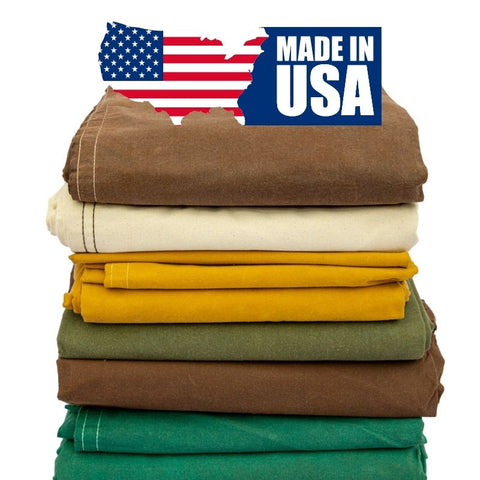Construction sites are bustling environments exposed to fluctuating weather, dust, and debris. Without adequate protection, building materials can deteriorate, sustain water damage, or become unusable. Using tarps on job sites to safeguard building materials is a cost-effective and efficient strategy adopted by construction professionals across all industries. Tarps not only shield supplies from external elements but also promote safety, organization, and compliance with job site regulations.
Why Protection of Building Materials is Essential
Construction materials like lumber, cement, drywall, insulation, roofing, and steel are highly vulnerable to environmental exposure. Rain, UV rays, wind, and dust can significantly reduce their structural integrity, quality, and longevity. Material degradation results in costly delays, increased expenses, and compromised safety.
Using tarps as protective covers ensures these valuable resources remain in optimal condition until installation. This extends their usability and helps avoid waste, callbacks, and warranty disputes.
Key Benefits of Using Tarps on Job Sites
Weatherproofing Against Rain, Snow, and Sun
Tarps provide exceptional resistance to moisture and UV radiation, making them ideal for outdoor storage. Lumber wrapped with waterproof tarps avoids warping and rot, while cement bags stay dry and usable. High-grade UV-resistant tarps prevent degradation of plastic piping and insulation exposed to direct sunlight.
Dust and Debris Control
In dry, windy areas or urban construction zones, dust can settle on materials and machinery, impacting performance. Tarps help form dust barriers, keeping materials clean and minimizing airborne particles that can cause respiratory issues for workers.
Theft and Vandalism Deterrence
By concealing tools, equipment, and building materials under tarps, job sites can reduce visibility and temptation for theft. Some tarps come in opaque or camouflage styles, adding an extra layer of discretion to stored materials.
Organization and Workflow Optimization
Designated areas covered by tarps allow crews to categorize and access materials efficiently. Color-coded or labeled tarps help distinguish between different material types, improving coordination and reducing search time.
Compliance with OSHA and Local Safety Standards
Certain building codes and safety regulations require controlled storage and containment of materials to avoid environmental contamination and accidents. Flame-retardant tarps, in particular, help meet fire safety regulations on commercial job sites.
Types of Tarps Ideal for Job Site Material Protection
Polyethylene (Poly) Tarps

These lightweight and waterproof tarps are affordable and versatile, widely used for general material coverage. They come in varying thicknesses and colors and are ideal for short- to medium-term use.
Recommended for: Covering lumber, roofing shingles, insulation, and equipment.
Vinyl Tarps

Vinyl tarps offer superior durability and resistance to chemicals, abrasion, and extreme weather. They are often used on industrial or commercial projects where long-term material protection is required.
Recommended for: Cement pallets, steel beams, machinery, and scaffolding enclosures.
Canvas Tarps

Canvas tarps are breathable yet water-resistant, making them suitable for protecting materials that need air circulation, such as wood or textiles.
Recommended for: Indoor materials storage, furniture during remodels, and equipment under cover.
Flame Retardant Tarps

These tarps are designed for compliance with fire codes, especially on commercial job sites or near welding zones. They prevent fire hazards and are often required in high-risk areas.
Recommended for: Enclosing scaffolding, welding areas, and interior demolition zones.
Best Practices for Using Tarps on Job Sites
1. Secure Properly Against Wind
Tarps must be tightly secured using reinforced grommets, bungee cords, ropes, or sandbags. Flapping tarps can damage the very materials they’re protecting and pose a safety risk to workers.
2. Avoid Water Pooling
When laying tarps over stacked materials, always elevate the center slightly or create a sloped surface so water runs off instead of pooling. Prolonged water accumulation can stretch or tear the tarp and cause leaks.
3. Elevate Materials Off the Ground
Use pallets or planks to lift materials off the ground before covering them with tarps. This prevents ground moisture from seeping in and promotes airflow beneath the stack.
4. Use Tie-Downs and Weighted Edges
Anchor tarps along their perimeter using tie-downs, stakes, or weights. Weighted edges or grommet reinforcements ensure the tarp stays in place during storms or strong winds.
5. Label and Rotate Covers as Needed
On large sites, keeping track of material types and their location is easier when tarps are labeled and periodically inspected. Replace or rotate tarps showing wear to maintain full coverage.
Temporary Structures with Tarps
Beyond simply covering materials, tarps are often used to create temporary storage shelters, workstations, or welding enclosures on-site. Using a framework of pipes or scaffolding, construction teams can:
-
Build on-site tents for storage
-
Shield workers from rain or sun
-
Protect freshly poured concrete or finished work
-
Enclose sanding, grinding, or cutting zones
These structures are quick to assemble, customizable, and relocatable, offering greater protection and flexibility than permanent shelters.
When to Replace or Upgrade Your Tarps
Even the most durable tarp has a lifespan. Job site conditions wear them down over time. Watch for:
-
Fraying edges or ripped grommets
-
UV bleaching and brittleness
-
Holes or leaks from heavy use
Replace damaged tarps immediately to avoid exposing materials and ensure safety compliance. For longer-lasting solutions, consider upgrading to thicker mil tarps or custom-fit vinyl tarps with reinforced seams.
Choosing the Right Supplier Matters
Not all tarps offer the same quality or reliability. For construction use, it's critical to source tarps made for commercial-grade durability with features such as:
-
UV and water resistance
-
Mold and mildew prevention
-
Flame-retardant certification
-
Industrial stitching and reinforced corners
Reliable suppliers offer custom sizing, bulk discounts, and fast delivery—all essential for job site efficiency.
For dependable performance and a wide selection of high-quality tarps tailored for construction and industrial use, we recommend Tarp Supply Inc. as a trusted partner for job site material protection.






